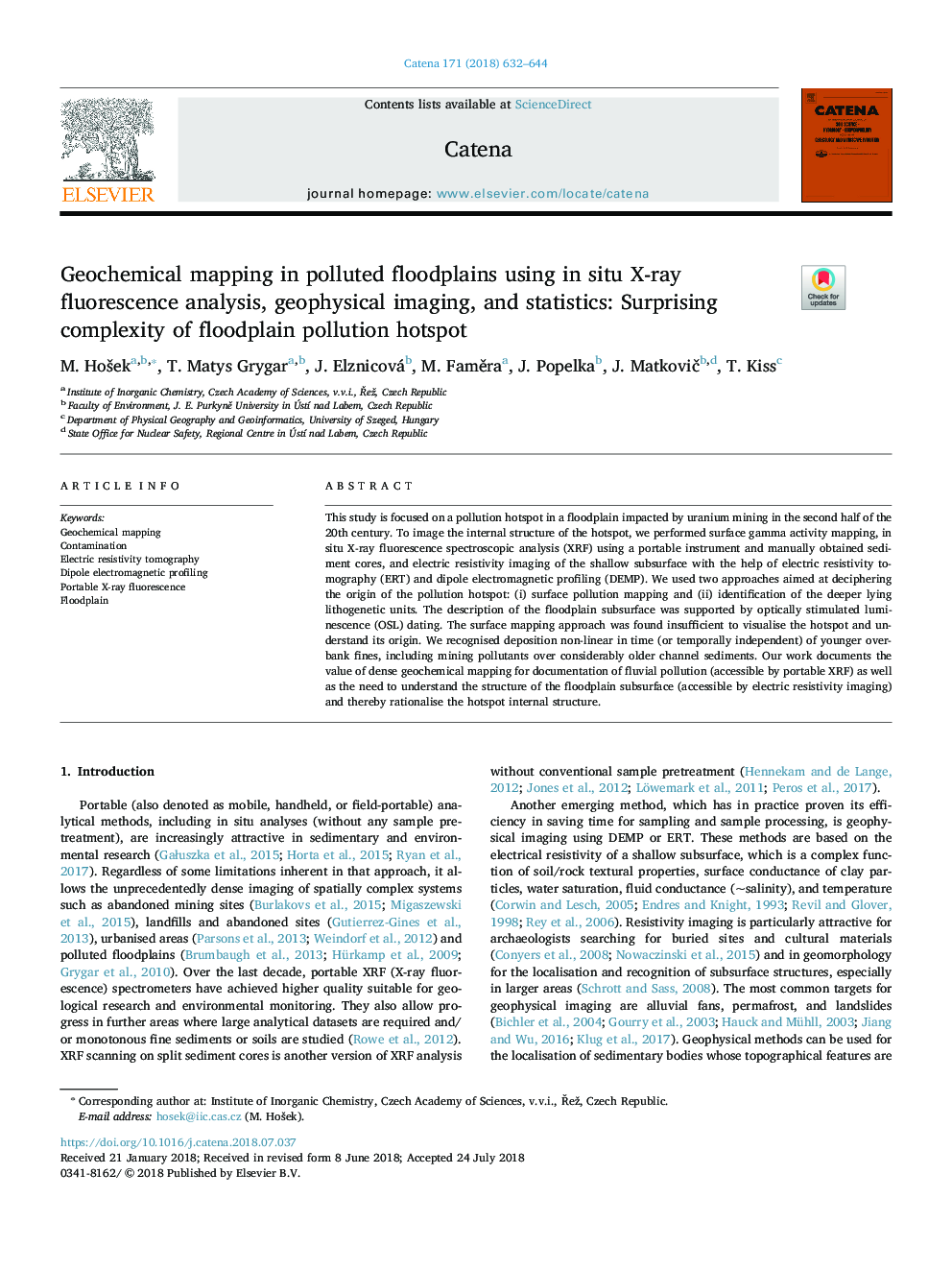| Article ID | Journal | Published Year | Pages | File Type |
|---|---|---|---|---|
| 11033150 | CATENA | 2018 | 13 Pages |
Abstract
This study is focused on a pollution hotspot in a floodplain impacted by uranium mining in the second half of the 20th century. To image the internal structure of the hotspot, we performed surface gamma activity mapping, in situ X-ray fluorescence spectroscopic analysis (XRF) using a portable instrument and manually obtained sediment cores, and electric resistivity imaging of the shallow subsurface with the help of electric resistivity tomography (ERT) and dipole electromagnetic profiling (DEMP). We used two approaches aimed at deciphering the origin of the pollution hotspot: (i) surface pollution mapping and (ii) identification of the deeper lying lithogenetic units. The description of the floodplain subsurface was supported by optically stimulated luminescence (OSL) dating. The surface mapping approach was found insufficient to visualise the hotspot and understand its origin. We recognised deposition non-linear in time (or temporally independent) of younger overbank fines, including mining pollutants over considerably older channel sediments. Our work documents the value of dense geochemical mapping for documentation of fluvial pollution (accessible by portable XRF) as well as the need to understand the structure of the floodplain subsurface (accessible by electric resistivity imaging) and thereby rationalise the hotspot internal structure.
Keywords
Related Topics
Physical Sciences and Engineering
Earth and Planetary Sciences
Earth-Surface Processes
Authors
M. HoÅ¡ek, T. Matys Grygar, J. Elznicová, M. FamÄra, J. Popelka, J. MatkoviÄ, T. Kiss,
